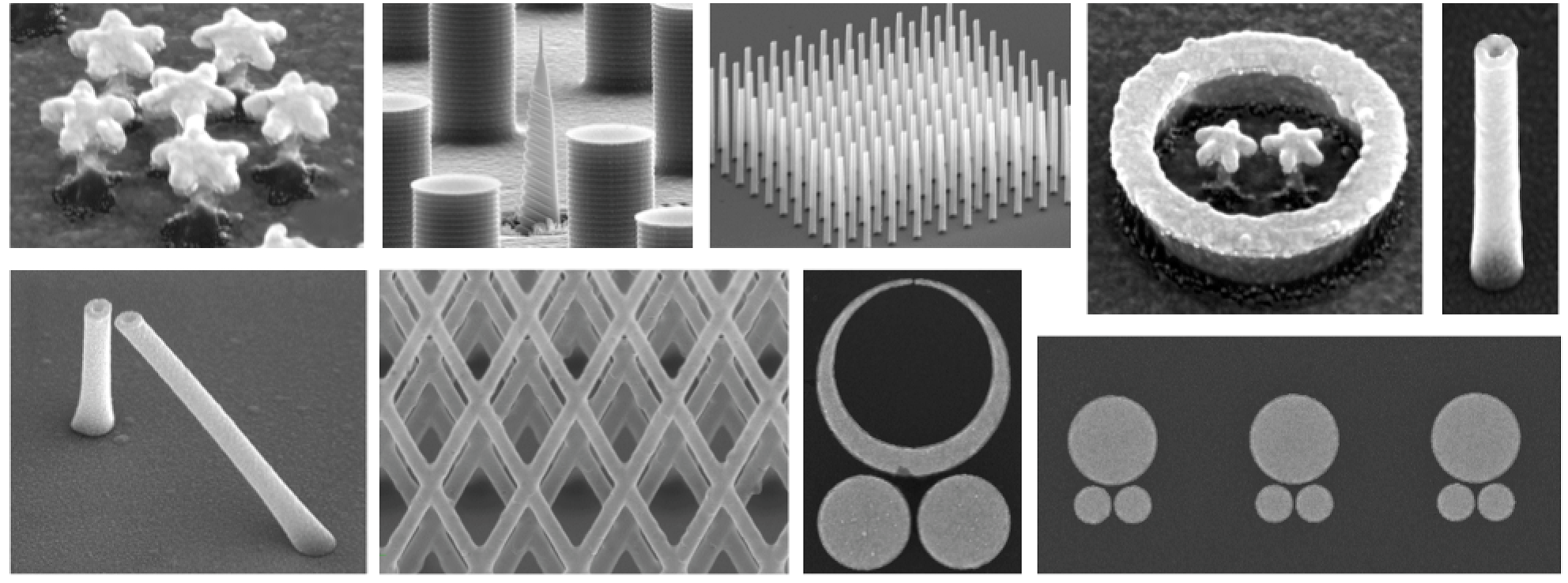Presenter: Prof. Andrea Toma (Italian Institute of Technology, Italy)
Topic: The nano-plasmonics charm:from superhydrophobic and 3D nanodevices to magnetic field manipulation
Time: 10:00 a.m., Aug. 4th (Thursday)
Location: Conference Room 308, BLDG 910-3F
Abstract
The fabrication of complex 3D plasmonic nanostructures integrated ininnovative device architectures represents a multidisciplinary key activity atthe core of most research efforts in nanoscience and technology. Here we wouldlike to describe how superhydrophobicity can be successfully combined withunconventional plasmonic structures for overcoming the diffusion limit, henceallowing the realization of devices capable of detecting, in a very short time,an extremely small number of molecules [1, 2]. We will proceed by introducing anovel manufacturing process capable of defining three-dimensionalnanostructures/nanocavities made of noble metals of various shapes and spatialarrangements. Within this context, the fabrication of 3D nanostructures hasbeen exploited for identifying innovative device configurations foroptofluidic/optoelectronic and biosensing applications (i.e. vertical 3D hollownanostructures and/or 3D nanostars as recyclable SERS platform) [3, 4]. Moreoverthe integration of 3D nanostructures with scanning probe tips has promoted theconception of a new kind of nanoscopy based on the combination of adiabaticcompression and hot electrons [5].
Finally, intense efforts have been spent in extending the hybridizationconcepts [6, 7] from electricto magnetic-like modes. Due to the low magneticsusceptibility of plasmonic metals, the generation of intense magnetichot-spots in the visible spectral range represents a challenging point for the plasmonicscommunity. In this regard, we developed and experimentally demonstrated aplasmonic nanoarchitecture (i.e. arrays of asymmetric trimers) able to sustaina magnetic coil-type plasmonic mode induced in Fano-like condition [8,9].

Fig1. Representative SEM micrographs of 3D plasmonic nanodevicesand planar Fano coil-type resonators.
1. F. DeAngelis, F. Gentile, F. Mecarini, G. Das, M. Moretti, P. Candeloro, M. L.Coluccio, G. Cojoc, A. Accardo, C. Liberale, R. Proietti Zaccaria, G.Perozziello, L. Tirinato, A. Toma, G. Cuda, R. Cingolani, E. Di Fabrizio, Nat. Photonics 5, 682 (2011).
2. E. Miele, M. Malerba, M. Dipalo, E. Rondanina,A. Toma, F. De Angelis, Adv.Mater. 26, 4179 (2014).
3. F. DeAngelis, M. Malerba, M. Patrini, E. Miele, G. Das, A. Toma, R. Proietti Zaccaria,E. Di Fabrizio, NanoLett. 13, 3553(2013).
4. M.Chirumamilla, A. Toma, A. Gopalakrishnan, G. Das, R. Proietti Zaccaria, R.Krahne, E. Rondanina, M. Leoncini, C. Liberale, F. De Angelis, E. Di Fabrizio, Adv. Mater. 26, 2353 (2014).
5. A. Giugni,B. Torre, A. Toma, M. Francardi, M. Malerba, A. Alabastri, R. ProiettiZaccaria, M. I. Stockman, E. Di Fabrizio, Nat. Nanotechnol. 8, 845 (2013).
6. S. Panaro,A. Nazir, C. Liberale, G. Das, H. Wang, F. De Angelis, R. Proietti Zaccaria, E.Di Fabrizio, A. Toma, ACSPhotonics 1, 310(2014).
7. P. Zilio, M.Malerba, A. Toma, R. Proietti Zaccaria, A. Jacassi, F. De Angelis, Nano Lett. 15, 5200 (2015).
8. A. Nazir, S.Panaro, R. Proietti Zaccaria, C. Liberale, F. De Angelis, A. Toma, Nano Lett. 14, 3166 (2014).
9. S. Panaro,A. Nazir, R. Proietti Zaccaria, L. Razzari, C. Liberale, F. De Angelis, A.Toma, NanoLett. 15, 5200(2015).
Biography
Andrea Toma hasa long-standing experience in the fabrication and characterization of 3Dnanostructures, facing cutting-edge issues in plasmonics and nanophotonics. Heis research scientist at the Italian Institute of Technology where he currentlyleads the magneto-plasmonics group (2 Post-docs, 3 PhD students and 1 masterstudent). Andrea Toma is Adjunct Professor at the University of Genova and,since 2012, member of the Proposal Study Panel at the Lawrence BerkeleyNational Laboratory. He published 80 scientific papers on ISI-indexedpeer-reviewed journals and holds 5 patents (citations>500/year, h-index=25).In particular he contributed to 1 Nature Nanotechnology (IF 35.267), 1 NaturePhotonics (IF 31.167), 3 Advanced Materials (IF 17.493), 6 Nano Letters (IF13.779), 5 ACS Nano (IF 13.334), 1 Advanced Functional Materials (IF 11.805), 2Physical Review Letters (IF 7.512). Andrea Toma works as referee for many internationaljournals and international funding agencies; he is fellow of the ItalianSociety of Optics and Photonics and a program committee member of fewconferences on light-matter interaction and nano-/micro-fabrication. In 2014 hewas appointed Editor on Nano-Plasmonics for the Encyclopedia of Nanotechnology,Springer and awarded as Experienced external reviewer of the Swiss NationalScience Foundation (SNSF) / Switzerland.
Contact:Prof. Lin Jiang
(责任编辑:张伶 邮箱:462696345@qq.com)